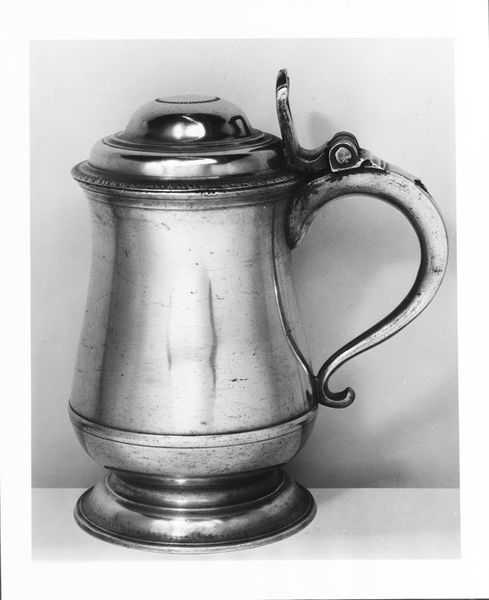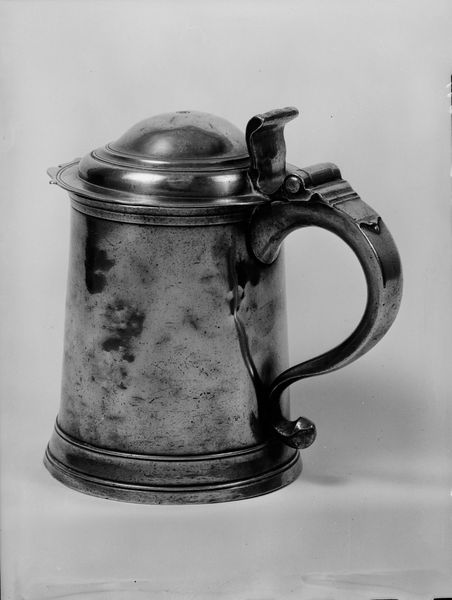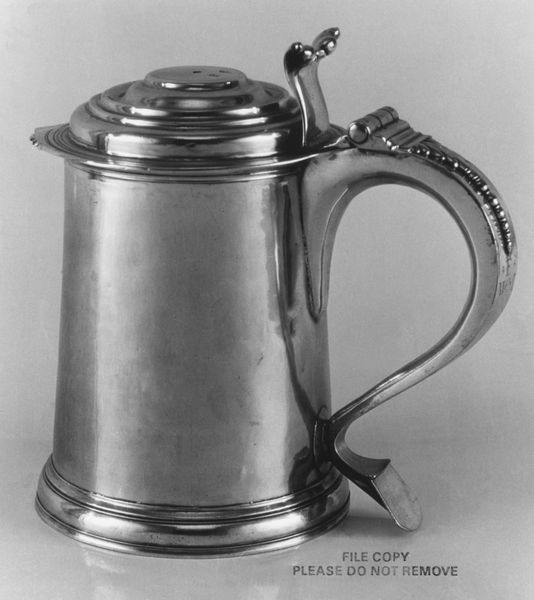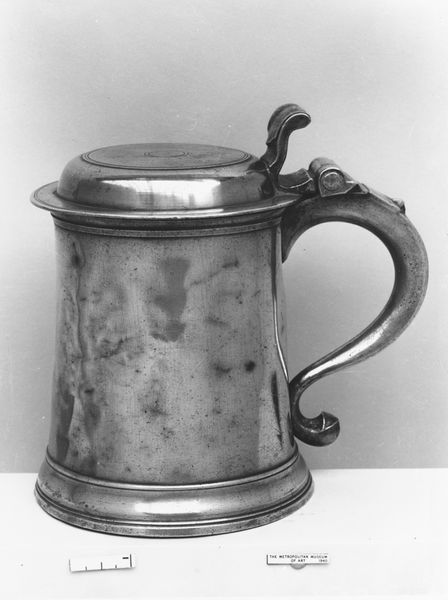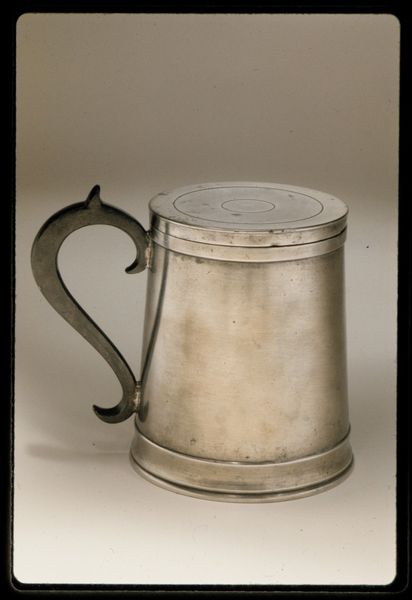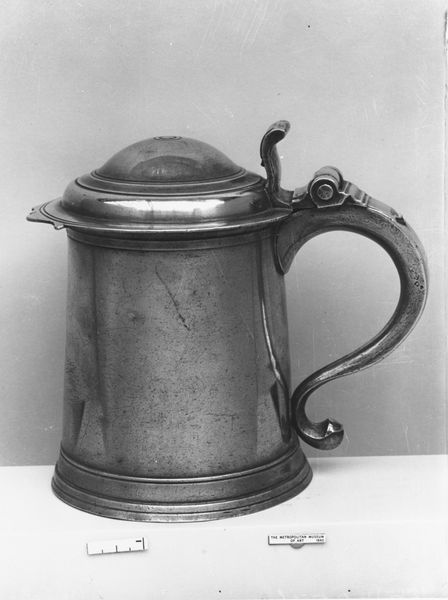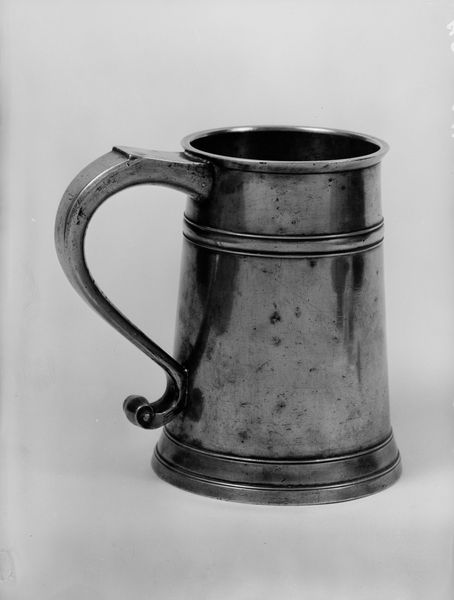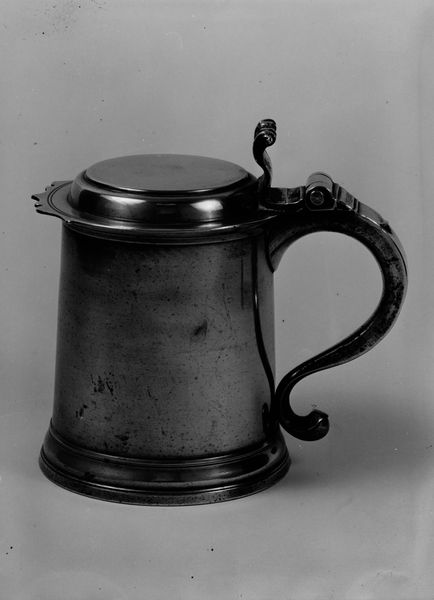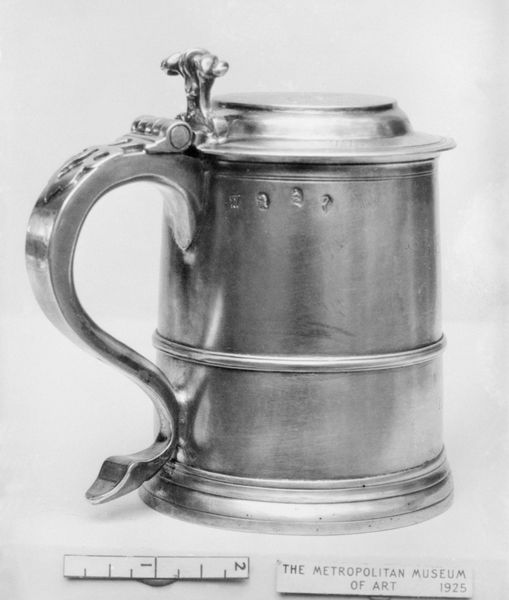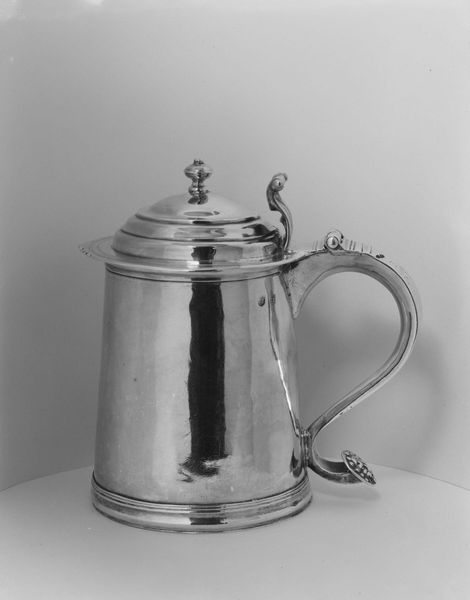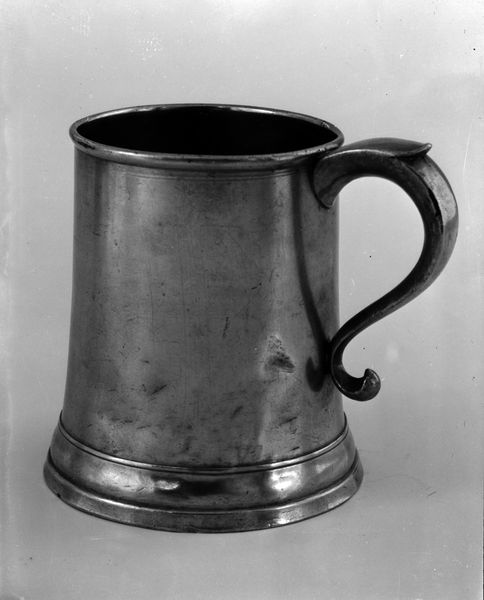
silver, metal
#
silver
#
metal
#
monochrome
#
decorative-art
#
monochrome
Dimensions: 7 x 8 in. (17.8 x 20.3 cm)
Copyright: Public Domain
Editor: This is a silver tankard, dating from between 1761 and 1799, created by Frederick Bassett. The handle has this dramatic flourish. What do you see in this piece? Curator: The emphasis, undeniably, is on form. Note the interplay between cylindrical body and the precisely shaped handle. Observe how its curves juxtapose the strict vertical lines of the container itself, and further how light plays across the surfaces defining edges and planes. Editor: It’s interesting that you focus on the interplay of light, particularly on a monochromatic object like this. Is that contrast a deliberate choice, or is it simply a function of the material? Curator: It is inherent to the manipulation of the material itself. The craftsman understood that light would reveal the subtleties of form; a silver object gains dimension precisely from those areas of highlighted sheen playing against muted curves. Ask yourself: could it achieve this same visual impact in pewter, or even a painted ceramic? Editor: Probably not. So, the choice of silver isn’t just for function, but adds a key element to the visual design. Curator: Precisely. And do observe how each element adheres to classical principles of proportion and balance. The relationship between base, body, handle and lid is carefully calibrated. There are echoes of classical architecture even in this everyday object, with the handle serving as both visual accent and counterpoint to its practical role. It is this very tension between utility and decoration that constitutes the artistic essence. Editor: So, function dictates the form, but then the artistry elevates it, and the light animates the form? Curator: Exactly. Form, light and material converge into a singular artistic statement.
Comments
No comments
Be the first to comment and join the conversation on the ultimate creative platform.
